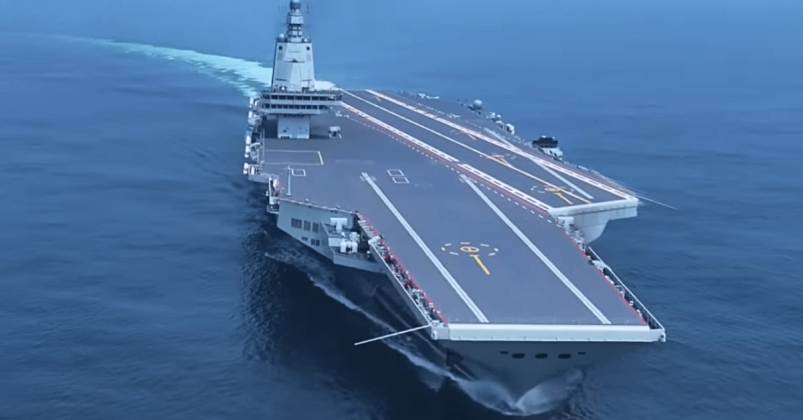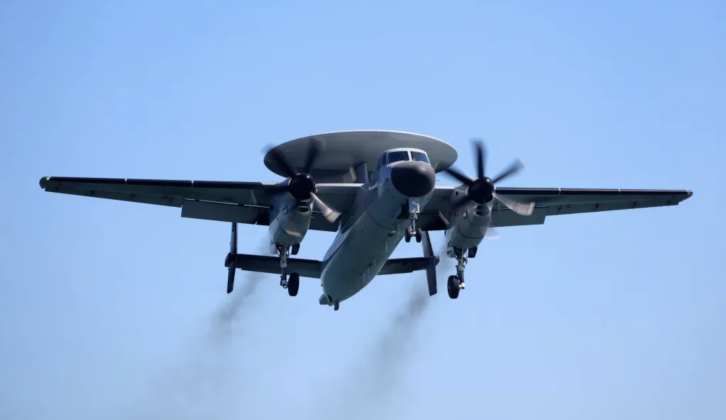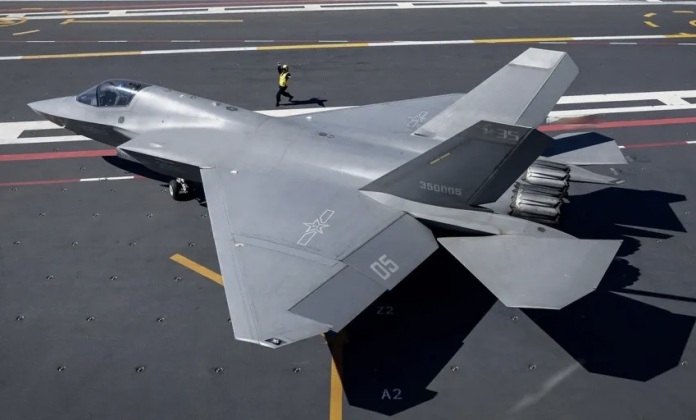News
China Shows Its First Supercarrier in Action As Stealth Fighters and ‘Flying Radars’ Launch Sorties
Chinese People’s Liberation Army Navy (PLAN) has for the first time released footage of its first supercarrier, the Fujian, with a wide range of aircraft from the ship’s air wing seen launching sorties. China’s fielding of a supercarrier has been anticipated for close to a decade, with the country’s aircraft carrier program having progressed rapidly since the first carrier, the Liaoning, was commissioned into service in 2012. The Fujian is the only flattop supercarrier operational anywhere in the world outside the U.S. Navy, and is one of just two ships with an electromagnetic catapult launch system alongside the USS Gerald Ford. The Fujian is estimated to displace 85,000 tons, making it smaller than the 100,000 ton American Gerald Ford class ships, although its air wing uses significantly newer types of aircraft with longer ranges and larger sensor suites, while the ship’s crew and maintenance needs and its operational costs are very significantly lower than the rival U.S. Navy vessels.

J-15T heavyweight fighter aircraft, J-35 medium with fifth generation fighters, and KJ-600 airborne early warning and control systems (AEW&Cs) were among the most notable aircraft seen launching of the aircraft, with no other non-U.S. carriers deploying similarly diverse air wings. The KJ-600 is the only non-American carrier based AEW&C in the world, while the J-35 is the only stealth fighter outside the U.S. Navy that is compatible with conventional aircraft carriers. Previously Chinese aircraft carriers, and the carriers fielded by Russia, the United Kingdom, and India all rely on helicopter AEW&C with much lower endurances, shorter ranges, radars a small fraction of the size, with the ability to deploy aircraft far out at sea providing a particularly significant advantage to the Fujian and to U.S. Navy carrier air wings. The importance of such aircraft and their oversized sensors has grown due to their utility increasing fleets’ situation awareness against enemy stealth aircraft, as such aircraft with very low observable capabilities have been fielded increasingly widely by both China and the United States.

Electromagnetic catapult launch systems are designed to provide energy to aircraft taking off from carrier decks, which reduces strain on their engines, and allows for takeoffs with significantly higher fuel and weapons payloads. This is expected to be particularly beneficial for the J-15T, which is one of the largest fighter aircraft in the world with a significantly higher weapons carrying capacity, heavier radar and greater fuel load than any other naval fighter. Unlike older variants of the J-15 procured in the 2010s, the J-15T has far superior ‘4+ generation’ capabilities including a higher use of more advanced composite materials for a lighter and more durable airframe, use of a more advanced AESA radar, integration of advanced stealth coatings, and use of some of the world’s most sophisticated avionics and electronic warfare systems. It integrates the same PL-10 and PL-15 air-to-air missiles as the J-35 as its primary armament, with its range and radar size being among the important advantages Chinese carrier air wings will have over their American counterparts. The J-15 is expected to remain the workhorse of the fleet, and to integrate an increasingly diverse array of missiles primarily for anti-shipping roles.

Growing uncertainty since the beginning of the year regarding the Pentagon’s ability to finance development of a sixth generation fighter for the air wings of the U.S. Navy’s aircraft carriers has significantly increased concerns in the Western world regarding the future standing of the American carrier fleet compared to that of China, indicating that the advantages Chinese air wings enjoy may well to continue to grow. The new J-35 which was confirmed to have joined the Navy in July, and while it is considered broadly equivalent to the U.S. Navy’s F-35C stealth fighter in its sophistication, it does benefit from a number of important advantages. These include carriage of a larger radar, a higher cruising speed, the ability to fly supersonically without risking damage to the airframe, a longer range, and a more manoeuvrable design better optimised to air-to-air combat. With the F-35 having been developed primarily for air defence suppression missions, however, the American aircraft is thought to retain superior electronic intelligence gathering capabilities due to its array of distributed passive sensors across its airframe. The Fujian and its air wing represent a major landmark both for China and for global carrier aviation, and for the first time in over 80 years provide a fully peer level challenge to the capabilities of American supercarriers and their air wings












